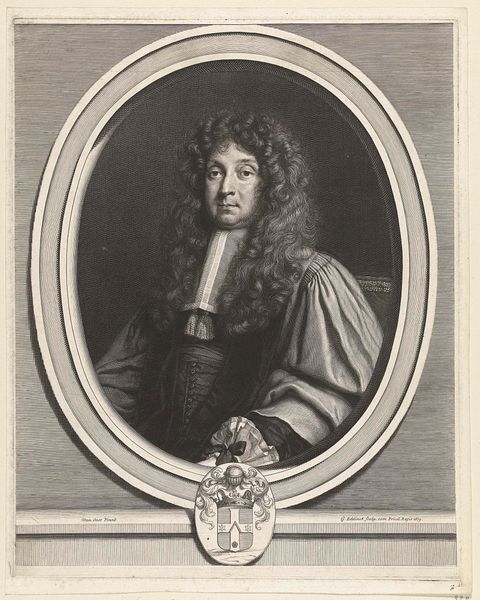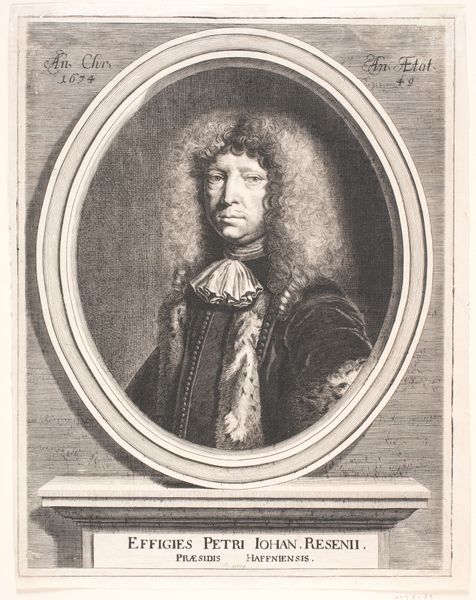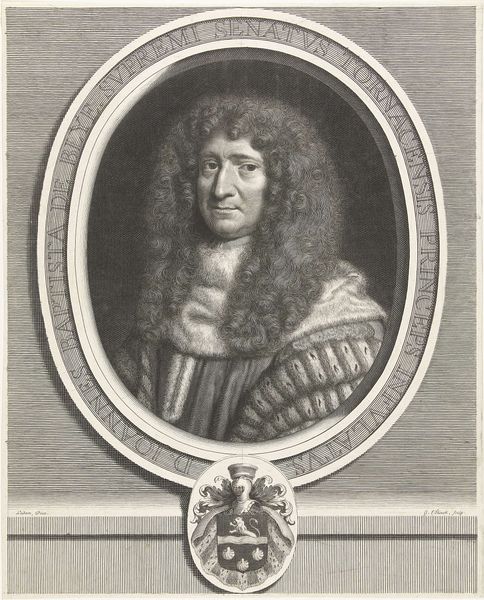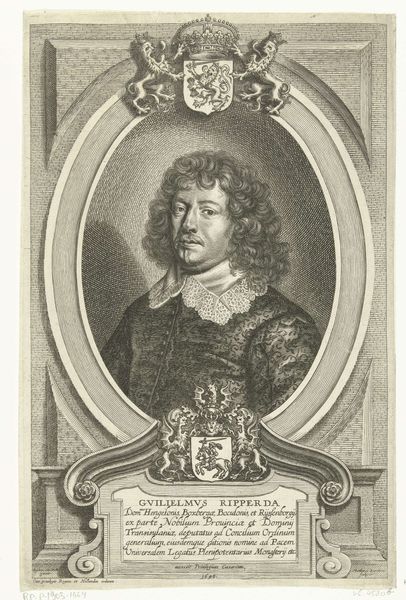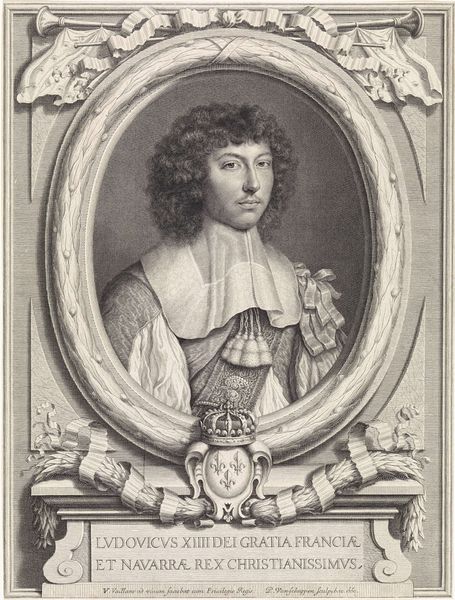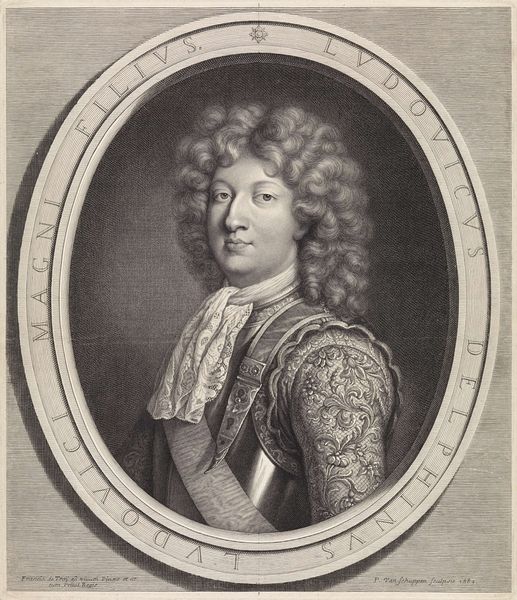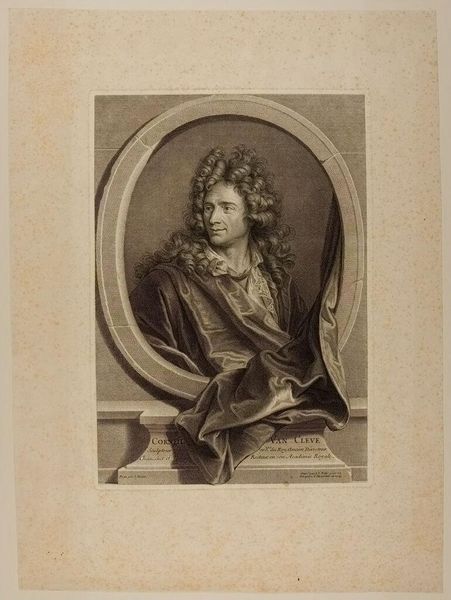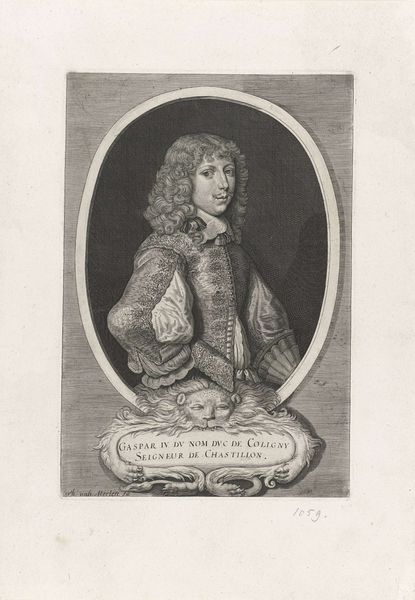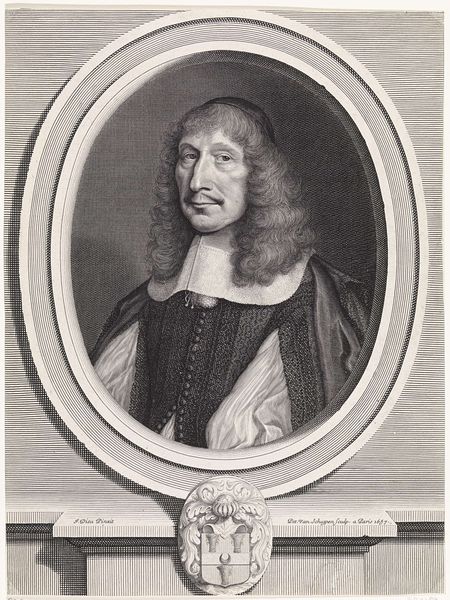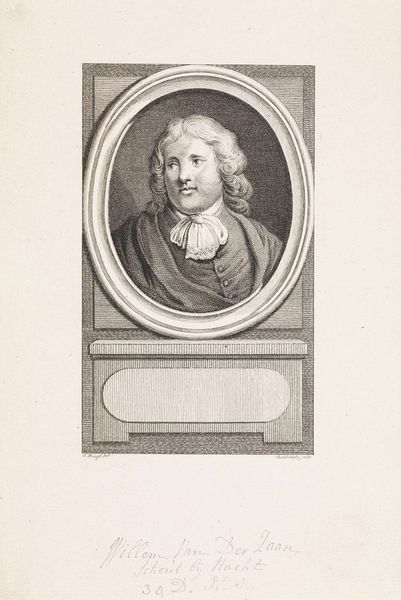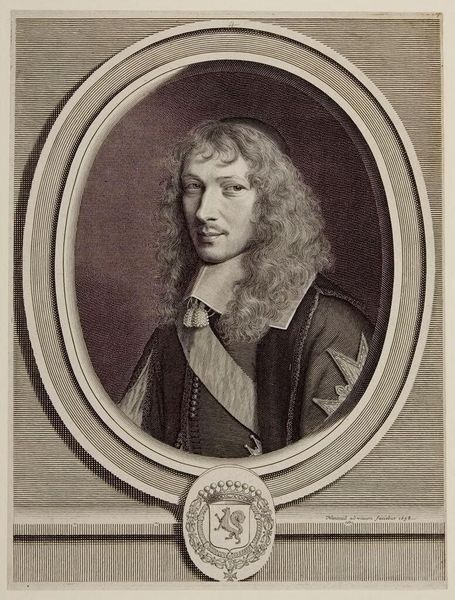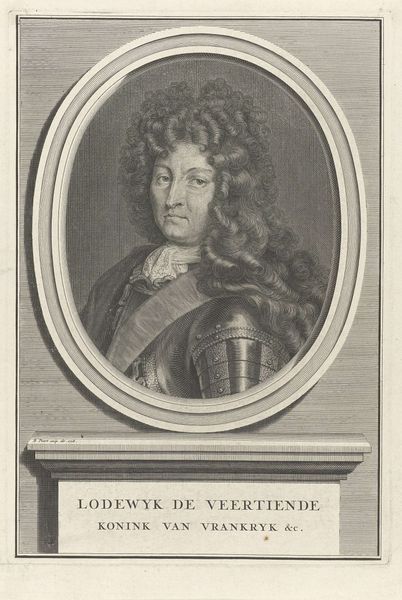
print, engraving
#
portrait
#
baroque
# print
#
old engraving style
#
history-painting
#
engraving
Dimensions: height 145 mm, width 89 mm
Copyright: Rijks Museum: Open Domain
Curator: This engraving, housed here at the Rijksmuseum, presents a "Portret van Reinier de Graaf." Created sometime between 1666 and 1707, it’s attributed to Gérard Edelinck. What's your first reaction to it? Editor: Intensely patterned, almost dizzying. The detail is astounding given it's a print; there's a real density to the textures of the lace and hair. It creates a visual feast for the eyes while demanding closer examination. Curator: As a print, specifically an engraving, the image gains additional weight when we consider the artist's physical and intellectual labor required to transfer this image. Look at the density and precision of the engraved lines! Edelinck translated Wattier's original drawing into this Baroque style image with meticulous care and attention. Editor: Precisely, and those deliberate lines really construct the visual symbolism. Notice how De Graaf is framed within the laurel wreath. This timeless symbol immediately elevates him, associating him with victory and intellectual prowess— a conscious move within the visual language of the era. It speaks to how physicians were viewed during this period, doesn't it? Curator: Absolutely. Moreover, engraving allowed for mass production. This wasn’t just a single portrait, but one meant for dissemination, contributing to De Graaf’s own legacy and reputation as an important doctor. Its materiality allows for a wider influence. Editor: The inscription below – "Medicinae Doctor" - also solidifies that. It makes it clear the importance of this person, anchoring the image's meaning and its cultural impact during its creation, further enhanced with its distribution to an interested viewership. It emphasizes De Graaf's learned identity within 17th-century society. Curator: Thinking about the production quality here brings up some interesting points. The high level of skill certainly challenges that long held, antiquated high art/low art boundary, pushing the definition of artistry itself. Editor: It surely does make one question traditional art distinctions! From a symbolic perspective, the stark black and white highlights this era's understanding of intellect, and prestige. Looking beyond its making to appreciate how this artwork functioned for its time brings it fully into view. Curator: Seeing it in terms of material culture and appreciating it's hand-crafted design gives us even richer understandings today. Editor: I agree, examining symbols alongside material and craft leads to more thoughtful observations.
Comments
No comments
Be the first to comment and join the conversation on the ultimate creative platform.
